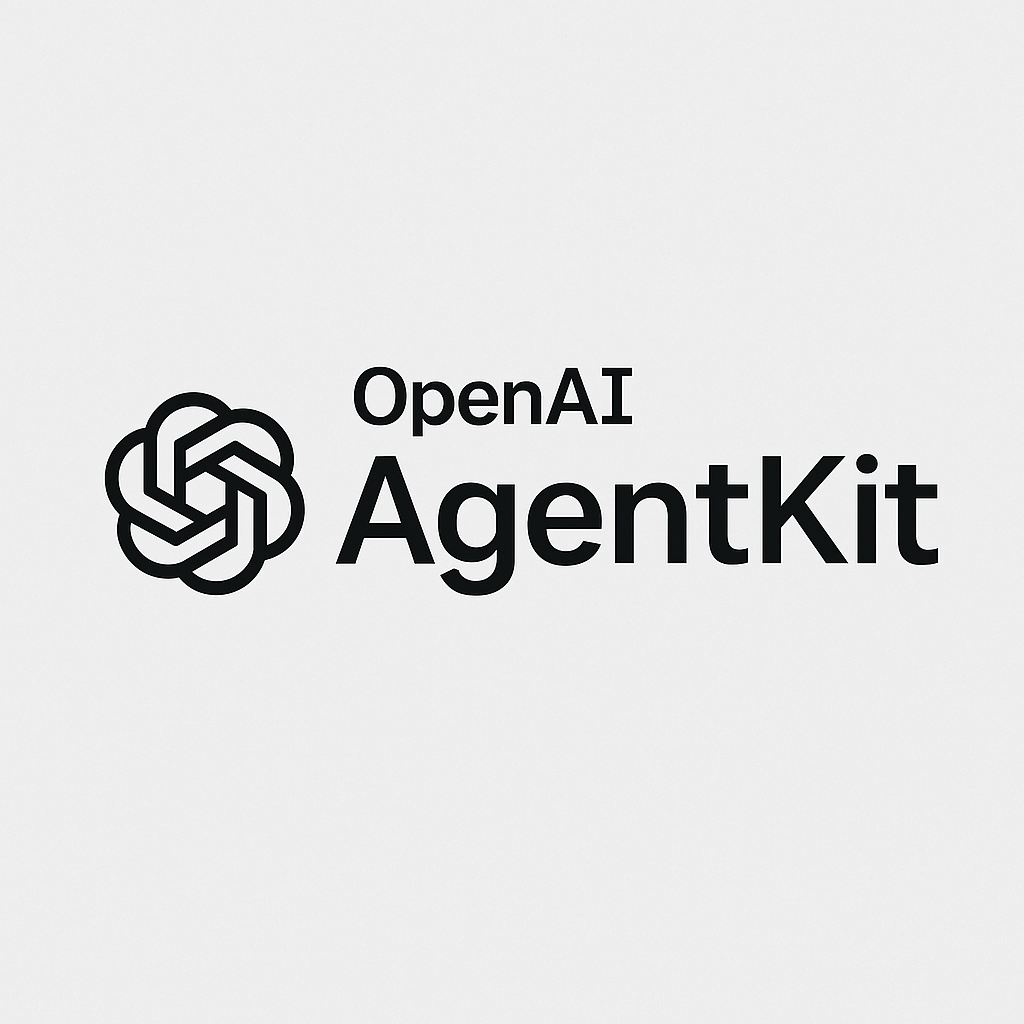How to Build an AI Copilot for Demand Generation [2025 Guide]
Step-by-step guide to building an AI copilot for demand generation. Learn which platform to choose, how to set up integrations, and how to automate your demand gen workflow.
![How to Build an AI Copilot for Demand Generation [2025 Guide]](https://cdn.prod.website-files.com/68af17a75a93098d39dfd04c/690365391f27ce81812e36cb_o-vPr6zekPXYTLIjngZ14.png)
Last Updated: October 2025
Time to Build: 1-2 days for basic implementation, 1-2 weeks for advanced workflows
Difficulty Level: Intermediate (some technical knowledge helpful but not required)
Key Takeaways
Building an AI copilot for demand generation doesn't require coding skills or a development team. Using workflow automation platforms like Relay.app, Make, or n8n combined with AI APIs, you can create a copilot that automates prospect research, generates personalized outreach, monitors buying signals, and handles follow-ups. This guide walks through the entire process from choosing a platform to deploying your first automated workflow.
Quick Answer: An AI copilot for demand generation is an automated system that uses AI to handle repetitive marketing tasks like prospect research, content creation, and lead nurturing. You build it by connecting workflow automation platforms to AI APIs and your existing marketing tools, then creating workflows that trigger actions based on specific conditions.
What Is a Demand Generation AI Copilot?
A demand generation AI copilot is an automated system that assists your marketing team by handling time-consuming tasks autonomously. Unlike traditional marketing automation that follows rigid if-then rules, an AI copilot uses language models to make contextual decisions.
Traditional automation: When someone downloads an ebook, send email template A, wait 3 days, send email template B.
AI copilot: When someone downloads an ebook, research their company and role, generate a personalized follow-up email addressing their likely pain points, send it at an optimal time based on their timezone and engagement patterns, monitor their response, and adjust the next touchpoint accordingly.
The copilot doesn't replace your marketing team. It handles the repetitive research and execution work so your team can focus on strategy, creative work, and relationship building.
What AI Copilots Can Do for Demand Generation
Here are tasks AI copilots handle well:
Prospect Research: Automatically gather information about leads including company details, tech stack, recent news, funding status, and key decision makers.
Personalized Content Creation: Generate customized email copy, LinkedIn messages, and ad copy based on prospect context and behavior.
Signal Detection: Monitor multiple data sources for buying signals like website visits, content engagement, job changes, and company announcements.
Lead Scoring and Routing: Analyze lead quality based on dozens of factors and route high-intent leads to sales automatically.
Nurture Campaign Management: Adjust email sequences based on engagement patterns and prospect behavior rather than following fixed timelines.
Competitive Intelligence: Track competitor activities and alert your team to relevant changes in positioning or product offerings.
If you're already implementing AI for B2B sales enablement, an AI copilot for demand generation works alongside those tools to create a complete revenue generation system.
What AI Copilots Struggle With
AI copilots aren't good at everything. They struggle with:
Strategic decisions that require business context and judgment. Creative concepts that need genuine originality. Relationship building that depends on human connection. Complex negotiations that involve reading between the lines. Brand voice that needs to convey specific personality traits consistently.
Use copilots for execution and research, not for strategy or creative direction.
Prerequisites: What You Need Before Building
Before you start building, make sure you have these elements in place.
Tools and Accounts You'll Need
Workflow Automation Platform: Account with Relay.app, Make, or n8n (free tiers available for testing).
AI API Access: API key from OpenAI (GPT-4), Anthropic (Claude), or Google (Gemini). OpenAI's API costs around $0.03 per 1,000 tokens for GPT-4o.
Marketing Tools: Access to your CRM (HubSpot, Salesforce), email platform (Gmail, Outlook), and any other tools you'll integrate.
Data Sources: List of data sources you want to pull from (LinkedIn, company websites, intent data providers, review sites).
Technical Skills Required
You don't need to code, but basic technical literacy helps:
Understanding of APIs and how tools connect. Comfort with JSON and data formatting. Ability to read and modify simple code snippets. Basic troubleshooting skills when things don't work.
If you've never used workflow automation tools before, spend a few hours with tutorials on your chosen platform before building complex copilots. Most platforms have extensive documentation and example workflows.
Data and Process Readiness
Your data quality determines copilot effectiveness:
Clean CRM Data: Accurate contact information, proper segmentation, and consistent formatting. If your CRM is full of duplicates and missing fields, clean it up first.
Documented Processes: Written workflows for how demand generation currently works. What happens when a lead comes in? Who gets notified? What triggers different actions? Document this before automating it.
Clear Goals: Specific outcomes you're trying to achieve. "Automate lead research" is too vague. "Reduce time spent researching leads from 30 minutes to 5 minutes per lead" is specific and measurable.
Budget Considerations
Here's what building an AI copilot typically costs:
Platform Costs: Relay.app starts at free for basic use, $20/month for more workflows. Make starts at $9/month. n8n is free if self-hosted, $20/month for cloud hosting.
AI API Costs: Varies by usage. Budget $50-200/month for a small team's AI API calls. Costs scale with volume.
Integration Costs: Some tools charge extra for API access. Check if your CRM or email platform requires a higher plan tier for API access.
Time Investment: 10-20 hours for initial setup and learning, then ongoing maintenance as needed.
Total monthly cost for a small team: $100-300 including platform, AI APIs, and tool subscriptions.
Step 1: Map Your Demand Gen Workflow
Before building anything, map out your current demand generation workflow step by step. This helps you identify what to automate and in what order.
Document Your Current Process
Write down your demand generation workflow from beginning to end:
Lead Capture: Where do leads come from? Website forms, LinkedIn, events, content downloads, referrals?
Lead Enrichment: What information do you gather about leads? Company size, industry, tech stack, role, budget?
Qualification: How do you determine if a lead is worth pursuing? What criteria matter?
Nurturing: What happens to qualified leads? What emails do they get? What content do they see? What triggers different actions?
Handoff to Sales: When and how do leads get passed to sales? What information does sales need?
Be specific. Don't write "We nurture leads." Write "When someone downloads our ebook, we send a follow-up email 2 days later offering a demo. If they don't respond, we add them to our monthly newsletter. If they visit pricing 3+ times, we notify sales."
Identify Bottlenecks and Time Sinks
Look at your documented workflow and highlight where time gets wasted:
Tasks that take hours but don't require strategic thinking. Manual data entry that could be automated. Research that gets repeated for every lead. Content creation that uses templates with minor modifications. Monitoring that requires checking multiple tools daily.
These bottlenecks are your best candidates for AI copilot automation.
Prioritize What to Automate First
Don't try to automate everything at once. Pick one high-impact workflow to start:
Good first automations:
- Prospect research before outreach
- Personalized email generation for new leads
- Signal detection and alerting for hot accounts
- Meeting note summarization and follow-up
Bad first automations:
- Complex multi-step nurture campaigns
- Brand-sensitive content creation
- Strategic account planning
- Anything requiring perfect accuracy
Start simple, prove value, then expand.
Define Success Metrics
How will you know if your copilot is working?
Time Savings: Time spent on task before vs. after automation.
Quality Improvements: Lead quality scores, response rates, conversion rates.
Consistency: Percentage of leads that get proper follow-up.
Team Satisfaction: Surveying team members on whether the copilot helps or creates more work.
Write these metrics down. You'll measure them after implementation to determine ROI.
Step 2: Choose Your AI Copilot Platform (Relay.app vs Make vs n8n)
Three platforms dominate the AI workflow automation space. Here's how to choose between them.
Platform Comparrion
Relay.app: Best for Marketing Teams
Relay.app is built specifically for marketing and sales teams who want to add AI to their workflows without technical complexity.
Strengths:
- Native AI integration with GPT-5 and Claude built in
- Human-in-the-loop features for approvals before actions
- Marketing-focused templates and use cases
- Clean interface that non-technical people can use
- Good documentation and excellent support
Weaknesses:
- Less customization than Make or n8n
- Fewer integration options (though covers most major tools)
Best for: Marketing teams without dedicated technical resources who want to get AI copilots running quickly.
Make: Best for Power Users
Make (formerly Integromat) offers the most integrations and flexibility for users comfortable with some technical complexity.
Strengths:
- 1,500+ app integrations
- Powerful data transformation capabilities
- Visual workflow builder with advanced logic
- Strong community and template library
- Good balance of power and usability
Weaknesses:
- AI integration requires more setup
- Steeper learning curve than Relay
- Can get expensive with high usage
Best for: Marketing ops professionals or teams with some technical capability who need maximum integration options.
n8n: Best for Developers
n8n is open-source and offers complete control over workflows and data.
Strengths:
- Self-hostable (no vendor lock-in)
- Complete customization possible
- Can write custom nodes and functions
- Active open-source community
- Most cost-effective at high scale
Weaknesses:
- Requires technical skills to use effectively
- More setup and maintenance required
- Smaller template library than competitors
Best for: Technical teams who want complete control or companies with data sovereignty requirements.
Which Platform Should You Choose?
Choose based on your team's technical capability and scale requirements:
Go with Relay.app if: Your marketing team has limited technical skills, you want to launch quickly, and you're willing to pay for simplicity.
Go with Make if: You have marketing ops people comfortable with tools, you need lots of integrations, and you want good power-to-usability ratio.
Go with n8n if: You have developers on your team, you need to self-host for security/compliance, or you plan to run thousands of workflows monthly.
For this guide, we'll use Relay.app examples because it's most accessible, but the concepts apply to all platforms.
Step 3: Set Up Data Integrations & Connections
Before building workflows, connect your copilot to the data sources and tools it needs.
Connect Your Core Marketing Tools
Start by connecting the tools you use daily:
CRM Integration: Connect HubSpot, Salesforce, or your CRM to pull contact data and update records automatically. You'll need API credentials from your CRM admin.
Email Platform: Connect Gmail, Outlook, or your email sending platform for outreach automation. Set up proper authentication to avoid deliverability issues.
Calendar: Connect Google Calendar or Outlook Calendar for scheduling automation and availability checking.
These core integrations let your copilot read and write data to the tools you already use.
Set Up AI API Access
Get API keys from your chosen AI providers:
OpenAI (GPT-4): Create an account at OpenAI, add payment method, generate API key. Store the key securely.
Anthropic (Claude): Request API access at Anthropic, generate API key once approved. Claude often provides more detailed, thoughtful responses than GPT-4.
Google (Gemini): Access through Google AI Studio, generate API key. Gemini offers competitive pricing and good performance.
In Relay.app, you add these API keys once in settings, then use them across all workflows. In Make and n8n, you'll configure them per workflow or create global connections.
Connect Data Enrichment Sources
Add tools that provide additional prospect information:
LinkedIn: Use tools like Phantombuster or Apify to pull LinkedIn data. Note: Be careful with LinkedIn's terms of service.
Company Data: Connect Clearbit, ZoomInfo, or similar for firmographic data.
Intent Data: If you use intent data providers like 6sense or Bombora, connect them for buying signal information.
Web Scraping: Use Apify or built-in scraping tools to pull data from websites, review sites, or other public sources.
Set Up Proper Authentication and Security
Protect your data and API keys:
Use Environment Variables: Don't hardcode API keys in workflows. Store them securely and reference them as variables.
Set Proper Permissions: Give your automation platform minimum necessary permissions. Don't grant full account access if read-only works.
Enable Logging: Turn on detailed logging so you can troubleshoot issues and audit what your copilot does.
Test in Sandbox: If your CRM offers sandbox environments, test there first before connecting to production data.
Verify Connections Work
Before building complex workflows, test each connection:
Pull a sample contact from your CRM. Send a test email through your email platform. Make a test AI API call. Pull company data from enrichment sources.
Fix any connection issues now rather than discovering them mid-workflow.
Step 4: Build Your First Demand Gen Automation
Now you're ready to build. We'll create a simple but useful copilot: automated prospect research and personalized outreach for new leads.
The Workflow We're Building
Here's what this copilot will do:
- Trigger when a new lead is added to your CRM
- Pull additional information about the lead's company
- Use AI to research recent company news and identify likely pain points
- Generate a personalized outreach email
- Present the email to you for approval
- Send the email once approved
- Log the activity back to your CRM
This saves 20-30 minutes per lead on research and email writing while maintaining quality control.
Building the Workflow Step-by-Step
Step 1: Set Up the Trigger
In Relay.app, create a new workflow and select "HubSpot" (or your CRM) as the trigger. Choose "Contact Created" as the event. This fires whenever a new contact enters your CRM.
Configure filters if needed. Maybe you only want this for certain lead sources or specific properties.
Step 2: Enrich Company Data
Add a "Clearbit Enrichment" step (or similar data provider). Pass the company domain from your CRM contact to Clearbit. Clearbit returns company size, industry, tech stack, funding, and other firmographic data.
Store this enriched data in variables you'll use later.
Step 3: Research Company News
Add a "Web Search" step using Perplexity API or similar. Search for "[Company Name] recent news" and pull the top 5 results.
Add an "AI" step that summarizes the news: "You are a B2B marketing researcher. Summarize these news articles about [Company Name] and identify 2-3 likely business challenges they're facing based on this information."
Step 4: Generate Personalized Email
Add another "AI" step for email generation. Your prompt might look like:
"You are a B2B demand generation specialist. Write a personalized outreach email to [Contact Name], [Job Title] at [Company Name].
Context:
- Company Size: [Company Size]
- Industry: [Industry]
- Recent News: [News Summary]
- Likely Challenges: [Identified Challenges]
The email should:
- Reference specific company context
- Mention one relevant challenge they likely face
- Briefly explain how our solution helps
- Include a clear call to action for a brief call
- Be 150 words or less
- Sound natural and conversational, not salesy
Generate the email:"
The AI will produce a customized email based on all the research.
Step 5: Human Review
Add a "Human in the Loop" step in Relay.app. This presents the generated email to you for approval before sending. You can approve as-is, edit it, or reject it.
This ensures quality control while still saving massive time on the research and drafting.
Step 6: Send Email
Once approved, add a "Send Email" step using your connected email platform. Send the email to the contact.
Step 7: Log to CRM
Add a final step that updates the contact record in your CRM with notes about the outreach, tags indicating they're in this sequence, and any other relevant data.
Testing Your Workflow
Before deploying to production:
Manual Test: Run the workflow manually with a test contact. Check that each step produces expected outputs.
Edge Cases: Test with unusual inputs like missing data, very small companies, or contacts with minimal online presence. Make sure your workflow handles these gracefully.
Timing: Check how long the workflow takes end-to-end. If it's taking 5+ minutes, look for bottlenecks.
Accuracy: Verify the AI-generated content is actually personalized and relevant, not generic fluff.
Deploying to Production
Once testing looks good, activate your workflow. It will now run automatically for every new lead.
Monitor it closely for the first week. Check the emails being generated, track response rates, and gather feedback from recipients if possible.
Make adjustments based on what you learn. Maybe the AI is too formal, or references news that's not relevant, or needs better instructions on your value proposition. Iterate on your prompts and logic until output quality is consistently good.
Step 5: Test, Refine & Scale
Your first copilot is running, but you're not done. Now comes the refinement phase.
Monitoring Performance
Track these metrics for your copilot:
Success Rate: What percentage of workflows complete successfully vs. error out?
Output Quality: Are the generated emails getting responses? How do they compare to manually written emails?
Time Savings: How much time is this actually saving your team?
Edge Cases: What scenarios cause problems or produce poor outputs?
Most platforms offer dashboards showing workflow execution history, error rates, and execution times. Check these weekly at minimum.
Common Issues and Fixes
Here are problems you'll likely encounter and how to fix them:
Problem: AI generates generic content that doesn't feel personalized.
Fix: Improve your prompts with more specific context and examples of good vs. bad outputs. Give the AI more data to work with.
Problem: Workflows fail when data is missing.
Fix: Add conditional logic that handles missing data gracefully. Maybe skip enrichment if company domain is missing, or use default assumptions.
Problem: API rate limits getting hit.
Fix: Add delays between API calls, batch operations where possible, or upgrade to higher rate limit tiers.
Problem: Emails are going to spam.
Fix: Ensure proper email authentication (SPF, DKIM, DMARC), warm up new domains slowly, personalize more to avoid spam filters.
Refining Your Prompts
Your AI prompts will need continuous refinement. Here's how to improve them:
Add Examples: Show the AI examples of good outputs. "Here's a great email we sent previously: [example]. Generate something similar."
Be More Specific: Instead of "write an email," try "write a 150-word email that sounds conversational, references their company's recent Series A funding, and suggests a 15-minute call."
Use Constraints: Tell the AI what NOT to do. "Don't use marketing jargon like 'solutions' or 'leverage.' Don't make claims we can't back up. Don't be overly enthusiastic."
Test Different Models: GPT-4 might produce punchier copy while Claude might be more thoughtful and detailed. Test both for your use case.
Scaling to Additional Workflows
Once your first copilot works well, build more:
Start with high-value workflows similar to your first one. Maybe automated follow-up for leads who engage but don't respond, or automated research for accounts showing buying signals.
Reuse components from your first workflow. Copy your AI prompts, data enrichment steps, and logic that works well.
Build a library of prompt templates your team can use across different workflows. This ensures consistency and speeds up development.
Document everything. Write down what each workflow does, why you built it, and how it's configured. This helps when you need to troubleshoot or hand off to someone else.
Building More Complex Copilots
As you get comfortable, you can build more sophisticated copilots:
Multi-Step Nurture Copilots: Workflows that adapt based on prospect behavior across multiple touchpoints. If they engage with certain content, the copilot adjusts the next message accordingly.
Account-Level Copilots: Systems that monitor all activity across multiple contacts at a target account and coordinate outreach based on account-level signals rather than individual contact behavior.
Content Generation Copilots: Automated systems that research trending topics, generate content briefs, even draft articles based on keyword targets and competitive analysis. Content research automation can pull credible statistics to support these pieces.
Signal Aggregation Copilots: Systems that pull buying signals from dozens of sources (website visits, content engagement, social activity, intent data, job changes) and score accounts based on total signal strength. Reddit signal monitoring can surface unfiltered market intelligence.
Competitive Intelligence Copilots: Automated tracking of competitor websites, social media, product updates, and pricing changes with alerts when meaningful shifts occur.
Each of these follows the same basic pattern: trigger, gather data, process with AI, take action, log results. You're just combining more steps and data sources.
Common Implementation Pitfalls to Avoid
Here are mistakes teams make when building AI copilots and how to avoid them.
Pitfall 1: Automating Bad Processes
Don't automate a broken process. If your manual demand gen workflow doesn't work well, automating it just scales the dysfunction faster.
Fix your process first, then automate it. Document what good looks like manually before building a copilot to replicate it.
Pitfall 2: No Human Review at First
Some teams go fully automated immediately. Bad idea. Start with human review on everything your copilot produces.
Use "human in the loop" steps that require approval before actions happen. This lets you catch errors early and refine prompts based on real outputs.
Remove human review only after you're confident the copilot consistently produces high-quality outputs.
Pitfall 3: Poor Error Handling
Workflows will fail. Data will be missing. APIs will timeout. Services will be down.
Build error handling into every workflow. What happens if enrichment fails? If the AI doesn't respond? If the email bounces?
At minimum, log errors somewhere you'll actually see them and get alerted to fix issues.
Pitfall 4: Ignoring Data Privacy and Compliance
Sending prospect data to third-party AI APIs raises privacy concerns. Make sure you're compliant with GDPR, CCPA, and other relevant regulations.
Check your AI provider's data retention policies. Anthropic doesn't train on API data. OpenAI offers zero data retention options. Choose providers that align with your compliance requirements.
Consider what data you're sending. Maybe you don't need to send full prospect names to the AI, just company and role would work.
Pitfall 5: Set It and Forget It
AI copilots aren't set-it-and-forget-it systems. They need ongoing monitoring and refinement.
Set up weekly reviews of copilot performance. Check error logs, review output quality, track metrics. Make adjustments as you learn what works and what doesn't.
AI models change, your business changes, market conditions change. Your copilots need to evolve too.
Pitfall 6: Building Too Complex Too Fast
The temptation is to build elaborate multi-step workflows that handle every edge case. Resist this.
Start simple. Get one basic workflow running well. Learn from it. Then add complexity incrementally.
Complex workflows are harder to debug, harder to maintain, and more likely to break in unexpected ways.
Pitfall 7: Not Documenting Workflows
Six months from now, you won't remember why you built that workflow the way you did or what that weird conditional logic was for.
Document as you build. What does this workflow do? What problem does it solve? What are the key decision points? What data sources does it use? Who should be contacted if it breaks?
This documentation becomes critical as you scale and more people work with your copilots.
Ready to build AI copilots for your demand generation team? AI Agent Strategy helps B2B companies design and implement AI-powered systems that automate research, personalize outreach, and scale demand generation without adding headcount.
Related Blogs Post

AI for B2B Sales Enablement: Complete Guide 2025
Learn how AI transforms B2B sales enablement with tools for call prep, competitive battle cards, and content creation. Includes implementation roadmap and ROI measurement framework.

AI Agents for B2B Marketing: Complete 2025 Guide
Discover how AI agents transform B2B marketing operations. Learn about 8 types of marketing AI agents, real implementation examples, and how to choose the right tools for your team.

How I Stopped Generating AI Slop by Training Claude with Custom Skills
Building reusable "skills" for Claude eliminates repetitive prompting by encoding your style guidelines and standards into instruction files that load automatically. This systematic approach delivers consistent outputs and competitive advantage while competitors waste time with generic prompts.

OpenAI's AgentKit Proves We're at the Railroad Moment for Software
OpenAI's AgentKit launch proves AI agents are disrupting SaaS. Learn how marketing myopia explains why traditional software companies must redefine their business models or face obsolescence.

OpenAI AgentKit Just Reset AI GTM
OpenAI's AgentKit announcement on October 6, 2025 changed the conversation from "Can AI improve GTM?" to "How fast can you ship production agents?"

From AI Tool Sprawl to Strategic Networks: A Schön-Inspired GTM Framework
Despite 70% AI adoption in GTM workflows, companies struggle with conversions. This framework shows how to move from isolated AI tools to interconnected systems that deliver measurable results.

Power Your AI GTM Strategy by Recording Customer Phone Calls
To build an effective AI-driven Go-To-Market (GTM) strategy, start by recording customer calls.

AI Agent Strategy: Your Guide to GTM Excellence
The go-to-market landscape has fundamentally shifted. Today's top-performing organizations are leveraging AI agents to create competitive advantages, achieving outcomes to impact time savings per rep, increasing account coverage, and pipeline.

Signal-Based GTM: Key Insights from Clay's Sculpt 2025 in San Francisco
The AI hype in sales is settling into practical results. Companies are saving reps 10+ hours per week, hitting 72% account coverage instead of 19%, and building entirely new roles to make it happen.



